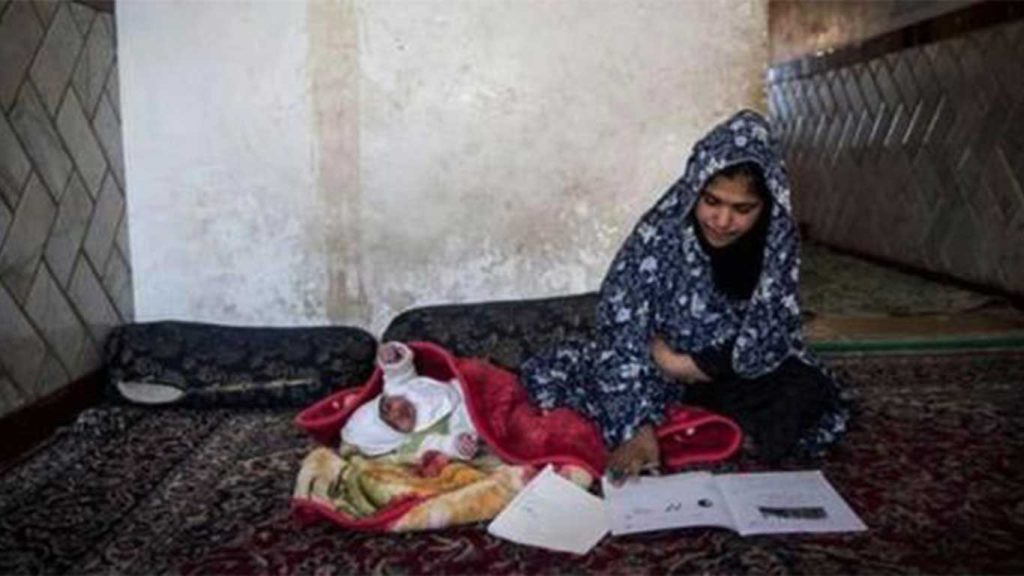Child marriage, defined as formal or informal unions involving a minor under 18 years old, affects millions of children globally each year. However, the problem is particularly acute in the Middle East, where patrifocal kinship structures, conservative gender norms, poverty, conflict and weak legal frameworks exacerbate risks. Iran is emblematic of these regional challenges, with an estimated 17% of marriages involving children. British-Iranian anthropologist Kameel Ahmady and his colleagues conducted firsthand research on the prevalence, causes and consequences of child marriage in seven Iranian provinces, documented in his book “Echo of Silence: A Comprehensive Research Study on Early Child Marriage in Iran.” This paper summarizes Ahmady’s key findings on the multifaceted drivers of child marriage, from poverty to patriarchy and social isolation. His work reveals the intersections of societal, communal and familial vulnerabilities that disproportionately burden girls and sustain child marriage.
This research invested two years in multimethod research across Iran engaging married and unmarried girls and boys and families through interviews, focus groups, surveys and in-depth case studies. This ecological approach provides insights into how macro-level systemic disadvantages and micro-level familial dynamics converge to create risks. Ahmady’s analysis counters assumptions blaming individual families, girls and boys or Islam for child marriage. Instead, he compassionately elucidates how broader inequities deny agency to and impose outsized burdens on impoverished children.
Endemic Poverty Compels Child Marriages
The study reveals how endemic poverty, especially concentrated in rural areas with minimal infrastructure, is a powerful driver of child marriage in Iran. Financial precarity diminishes girls’ access to education, healthcare and basic services, enhancing dependence on families. With destitute families desperate to reduce expenses and secure income, girls become commodified as transactional brides. Parents in dire straits see marrying off daughters as an economic safeguard, although it entrenches gender and income disparities long-term. Poverty strips agency from children unable to resist parents arranging exploitative marriages.
Patriarchy Devalues Girls, Empowers Fathers
Ahmady also implicates patriarchal kinship structures in driving child marriage risks for girls but not boys. Sons represent family assets as future breadwinners, whereas daughters are burdens to be protected through early marriage. These gendered constructions portray girls as liabilities warranting control, not rights or educational investment. Sons gain privileges while daughters lose autonomy and opportunities. Patriarchy also empowers fathers as authoritarian gatekeepers over daughters’ marital choices. Giving women and girls greater voice in family decisions is vital to reform.
Isolation Magnifies Girls’ Vulnerabilities
Furthermore, the study highlights how social isolation due to restrictive gender norms compounds child marriage risks. Mobility limitations and norms discouraging peer socializing isolate girls at home, dependent on relatives. Missing school, activities and healthcare access stunts development. With contacts limited to family, abused girls lack options for support. Tackling child marriage requires integrated interventions to offset the physical, educational, economic and psychological isolation that enhances coercive pressures.
Legal Loopholes Enable Abuse
“Echo of Silence dedicates” research substantial attention to how legal loopholes in Iran enable and perpetuate child marriage. Despite statutes setting minimum marriage ages of 13 for girls and 15 for boys, these laws are routinely violated with impunity, allowing marriages of even younger children to be arranged discreetly. The research reveals several factors that contribute to the continued flouting of marriage age laws:
– Weak enforcement and limited capacity allow illegal marriages to occur undetected by authorities. Law enforcement and social service agencies lack the staffing, funding, training and political backing to adequately monitor marriages.
– Narrow definitions of abuse mean that only cases meeting a high bar of evidence on severe physical or sexual violence qualify for prosecution. Early marriages without documented abuse often evade legal intervention.
– Reduced penalties such as fines or short detentions for perpetrators, even in proven child marriage cases, minimize deterrence. Judges have discretion to lessen sentences.
– Stigmatization and criminalization of victims as adulterers or fornicators for illegal relations in early marriages. Rather than receiving legal protections, victimized children face criminal charges for moral crimes.
– Lack of legal services and shelters discourages girls from coming forward and leaves them vulnerable if removed from families.
Comprehensively combatting child marriage requires legal reforms on numerous fronts – expanding monitoring, broadening abuse definitions, increasing penalties, adding victim protections, and decriminalizing exploited girls. However, this research stresses that top-down legal solutions are insufficient without broader cultural change at the community level to transform beliefs and practices around marriage. Evolving social norms and ground-up awareness must complement legislative action to make enforcement feasible, acceptable and impactful. The research nuanced analysis reveals the limitations of legal remedies in isolation and the need for holistic sociocultural transformation alongside strengthened laws to eradicate child marriage in Iran.
Limited Education and Awareness Propagate Beliefs
Additionally, Ahmady and his colleague’s notes that minimal educational access and low public awareness of child marriage’s harms enable its persistence. In rural areas, only 35% of girls complete high school, restricting knowledge acquisition. Lack of understanding of rights, physiology and consent magnifies manipulation risks. Greater access, targeted programming and community engagement can gradually dispel misconceptions and instigate positive shifts.
Through meticulous research cantering girls’ perspectives, the research provides an unprecedented window into child marriage drivers in Iran. His revelations underscore its complex roots in reinforcing gender, economic and social inequities. Sustainable solutions must be multifaceted, addressing poverty, patriarchy, legal gaps, education, isolation and awareness simultaneously. While focused on Iran, This research insightful ecological analysis and ethical engagement offer a model for investigating and responding to child marriage globally with cultural specificity.

 Farsi (فارسی)
Farsi (فارسی) Kurdish (کوردی)
Kurdish (کوردی)
